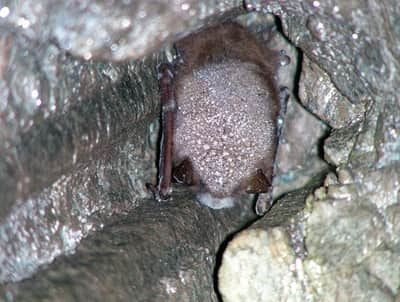New Study Upholds Theory that White-Nose Syndrome Originated in Europe and was Introduced to North America
OutdoorHub Reporters 04.11.12

Since white-nose syndrome (WNS) was first detected in North American bats in 2006, more than five million bats in Eastern Canada and the United States have been killed by the fungal disease, with some researchers speculating that the death toll is closer to seven million. A recent study published in the Proceedings of the National Academy of Sciences of the United States of America provides greater evidence for the notion that the disease originated in Europe and was brought to North America and proceeded to infect susceptible bat populations.
Specifically, the fungus has been found at low levels in bats across Europe but without the mass mortality present in North American bat populations. “This finding suggests that Gd [Geomyces destructans – the fungus causing the infection] is either native to both continents but has been rendered more pathogenic in North America by mutation or environmental change, or that it recently arrived in North America as an invader from Europe,” the study elaborates.
Both possibilities were tested in the lab using little brown bats, one of the most common species in North America. One group of bats was infected with a North American strain and the other with a European strain, researchers then began observation.
Craig Willis is an associate professor of biology who was one of the biologists to lead the lab experiments. He said, “If we were dealing with a mutant [type of WNS] in North America … we’d predict that the North American fungus should be way nastier for our bats than the European fungus. What we actually observed was the European version was even a little bit nastier.”
It suggests that European bats may have developed a resistance or even immunity to WNS and is “really quite strong evidence for that invasive pathogen idea,” Willis said.
One proposal for how WNS harms bats is that it causes them to have trouble “staying asleep” during hibernation, quickly depleting fat reserves and effectively starving them to death during the winter months normally spent hibernating.
The study may provide further evidence that human tourists could have unwittingly brought the fungus back from Europe and into North American caves. At this time, Canada is considering putting the bat on its endangered species list.

